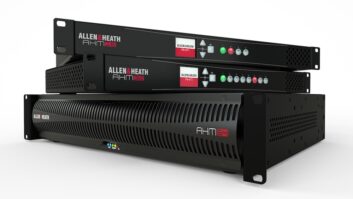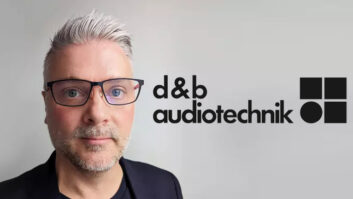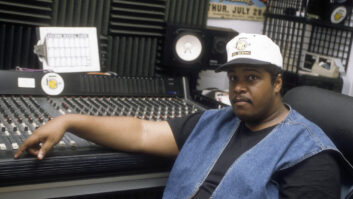This month, I’m starting a rant about commoditization and the increasing integration and digitization of electronic functions formerly given over to Ye Olde Analog methods. One longtime holdout has been amplification, which, as with most other applications, has finally begun what some view as the downward spiral toward (blech) digital. Let’s take a look at these so-called digital devices to understand why people think they’re digital and give some respect to a worthy technology that sure could use some.
Digital amplifier. The phrase conjures up the vision of either an esoteric piece of hi-fi gear or a cool, compact rackmount amp for reinforcement. What you don’t know is that digital amplifiers are now cheap, ubiquitous and available in virtually all power ratings. First off, they aren’t digital, not in the generally accepted sense. They are digital in the binary sense, but pulse width modulation (PWM) power amps are more in the delta sigma vein of DSD than the brute force approach taken by PCM.
Pulse width modulation converts analog amplitude variations into duty-cycle variations of a very high-frequency square wave. If the amplitude is zero, then the square wave is off, not present. If the amplitude is low, then the square wave spends most of its time off, with a teensy-weensy proportion of its time on. As the amplitude rises, the duty cycle, or amount of “on time,” increases and, at full power, the output devices are at 50 percent duty cycle — a full-power square wave — dumping all the current the power supply can muster into the load.
At the final output sits a high-current LPF, which filters the spurious harmonic energy, leaving the amplified, reconstructed audio program to pass unencumbered. Sound familiar? It should, as the lowpass filter serves the same purpose as an anti-image filter in a D/A converter.
Pulse width modulation is basically the same approach, but taken with cheap, SCR (silicon-controlled rectifiers) or triac-based lighting dimmers — the kind that are banned from any self-respecting audio facility. What you may not know is why they’re banned, and that’s all about the RF-induced noise in your studio, which we’ll look at later.
Most of you know that, in the realm of amplification, Class-A is the Holy Grail and only accessible to those who genuflect to the efficient, indirect radiator-horned (loaded) God. If you are a Class-A acolyte, you should grab the prayer beads now and run screaming for the next article, because PWM amps are philosophically anti-Class-A. While Class-A seeks to confine the output device within a small but linear operating range, a PWM amp’s output devices are purposefully designed to go nonlinear and stay that way until they’re shut off. One is extremely wasteful, while the other is efficient to the max.
Efficiency is one thing, but there are many other metrics by which one should judge an amplifier, and Class-D has its share of problems. Because we as an industry have yet to concoct a standardized testing regime that correlates to our impressions of an audio system being tested, we have to blunder our way through a quagmire of operational parameters to find something meaningful. When it comes to Class-D, slew rate, power supply, current-limiting and band-limiting output filters all have a major stake in the overall operation.
Now let’s talk about that RF noise I referred to earlier. For those of you who have listened to a 1kHz square wave, you know it doesn’t sound much like a 1k sine wave. The reason is that damnable gotcha: harmonics and the distortion they create. Square waves comprise an infinite summation of odd-harmonic sine waves with decreasing amplitude (6 dB/octave). That odd-harmonic energy is what lends that air of, shall we say, annoying timbre. Notice that I said infinite: It’s that harmonic energy marching out to the microwave band that makes SCR dimmers an audio pariah. Whenever you switch an electronic circuit off and then back on as fast as you can, the circuit will generate radio frequency noise. That radiated noise will worm its way into poorly shielded and grounded analog inputs nearby. Class-D amplifiers — like their distant relative, the switching power supply — require inclusive Faraday cages to contain the RF beast.
Looking at a power amp’s power aspect, Class-D amps behave differently than Class-A or A/B when it comes to maxing out. When the supply rails reach their limits, Class-D amps tend to compress rather than clip, but the power supply’s current capability is what shapes the amplifier’s overload behavior to which it’s attached.
If the amplifier is of the digital input variety (DSD or LPCM), then the input can clip when presented with continuous digital overs. If the amplifier is a hybrid design with an analog input, then that can, of course, clip in the old-school way. Though some manufacturers refer to Class-D amps with digital inputs as “pure digital,” don’t be bamboozled. Because a Class-D amp’s output is analog, you cannot really call them “digital” amplifiers. As I said before, they’re analog amps, just a wee bit nonlinear in their operation.
The final gross performance arbiter with Class-D products is slew rate, or the rate-of-change capability of the output devices. The device’s finite rise and fall times — how fast the transistors can switch on or off — determines how faithfully they can track the pulse width commands given to them. If the transistor is still slewing up or down when a command is given to head in the other direction, then it won’t be able to complete the last command. This results in slewing-induced distortion, which is very different from that same distortion in an “analog” amplifier. There are other factors that govern performance such as stability of the modulator’s clock. Along with power supply voltage regulations, it dictates linearity by the same mechanism seen in an A/D converter.
When the above considerations are carefully balanced, the result is a physically small, efficient and good-sounding amplifier whose deceptive form factor belies the power trapped within.
Nowadays, everything from iPods and cellphones to self-powered studio monitors sport versions of Class-D amplification. Some of the many manufacturers providing products, from single-chip versions to complete modular OEM assemblies, include Apogee, Bang & Olufsen ICEpower, Carver, Cirrus Logic, D2Audio, DEQX, Maxim Integrated, Microsemi, Mitsubishi, Mueta, PowerPhysics, Pulsus Technologies, Sanken, Texas Instruments, Tripath Technology, Wolfson Microelectronics and Zetex. Next time you’re at a hi-fi store or tradeshow, take a moment to recognize the changing face of amplification. Class-D, it’s not just for reinforcement anymore!
Many thanks to Ken Kantor for his patient guidance in the ways of The (Electromotive) Force.
OMas has had too many tradeshows on his mind, but still found time to chill with the tranquil alt rock of The Album Leaf’s One Day I’ll Be on Time (Tiger Style Records).






